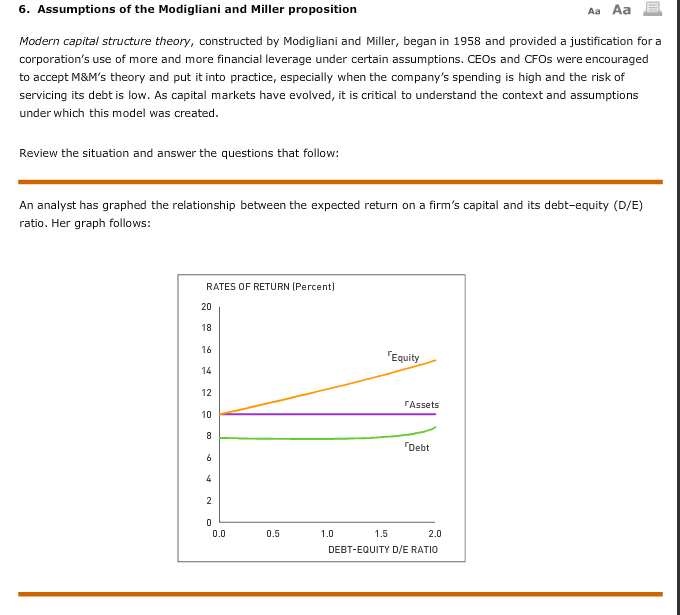

The average collection period must be monitored to ensure a company has enough cash available to take care of its near-term financial responsibilities. Average collection period is calculated by dividing a company’s average accounts receivable balance by its net credit sales for a specific period, then multiplying the quotient by 365 days. Understand the significance of the accounts receivable collection period.
In simple term, operating cycle means the length of time required to convert ‘Non-Cash current assets’ like raw material, work in process, finished goods and receivables ] into cash. The holding period of receivables is dependent on the period of credit extended to the customers. Companies can calculate the accounts receivable collection period using a rolling average accounts receivable balance that changes every three months.
- We also provide you with the Average Collection Period calculator along with a downloadable excel template.
- Your company should maintain customer satisfaction by providing an appropriate amount of credit limits and timelines for repayment.
- For one thing, to be meaningful, the ratio needs to be interpreted comparatively.
- In the first formula to calculate Average collection period, we need the Average Receivable Turnover and we can assume the Days in a year as 365.
- The assortment period for a particular invoice just isn’t a calculation, however somewhat is simply the amount of time between the sale and the cost of the bill.
This metric can be used to signal to management to review its outstanding receivables at risk of being uncollected to ensure clients are being monitored and communicated with. Companies calculate the average collection period to ensure they have enough cash on hand to meet their financial obligations. Net credit sales are the total of all credit sales minus total returns for the period in question. In most cases, this net credit sales figure is also available from the company’s balance sheet.
If customers feel that your credit terms are a bit too restrictive for their needs, it may impact your sales. The average collection period measures a company’s efficiency at converting its outstanding accounts receivable (A/R) into cash on hand. Use the month-end accounts receivable balance for each month in the measurement period. For seasonal businesses, the best practice is to use 12 months of data to account for the effects of seasonality.
The result should be interpreted by comparing it to a company’s past ratios, as well as its payment policy. This is basically a mix ratio i.e. it is making use of both income statement and balance sheet. Receivables can be found in the balance sheet under current assets section. In the first formula to calculate Average collection period, we need the Average Receivable Turnover and we can assume the Days in a year as 365.
So they have to put additional money from their pocket to run the business. Similarly, if debtor days are smaller in number, it means that money is being collected on time and it can be put in use for other operations. Finally, the debtor days ratio calculation is done by dividing the average accounts receivable by the total annual sales and then multiply by 365 days. Receivable Days Formula can also be calculated by dividing the average accounts receivable by the average daily sales. In the equation, “days” refers to the number of days in the period being measures .
Debtors / Receivable Turnover Ratio and Collection Period
Or multiply your annual accounts receivable balance by 365 and divide it by your annual net credit sales to calculate your average collection period in days for the entire year. Days Sales OutstandingDays sales outstanding portrays the company’s efficiency to recover its credit sales bills from the debtors. The number of days debtors took to make the payment is computed by multiplying the fraction of accounts receivables to net credit sales with 365 days. Customers with poor credit histories should not be approved for credit sales. Accounts should not be allowed to linger unpaid beyond the company’s credit terms. Compare accounts receivable collection period to the standard number of days customers are allowed before a payment is due.
A company’s receivables turnover ratio ought to be monitored and tracked to determine if a pattern or sample is developing over time. Also, firms can track and correlate the collection of receivables to earnings to measure the impression the corporate’s credit practices have on profitability. Typically, a low turnover ratio implies that the company should reassess its credit policies to make sure the timely assortment of its receivables. The average collection period is calculated by dividing the average balance of accounts receivable by total net credit sales for the period and multiplying the quotient by the number of days in the period. If a company can collect the money in a fairly short amount of time, it gives them the cash flow they need for their expenses and operating costs.
The average collection period formula assesses how well they’re managing their debt portfolio and whether they need to improve their collections strategy. A crucial metric for any business is the average collection period, a measure of how long it takes a customer to pay their bill. The average collection period formula, in turn, is critical for measuring a company’s collectability. The longer collections take, the less profitable each transaction will be, potentially leading to some serious financial troubles. As an alternative way to calculate the after-tax cost of debt, a company could determine the total amount of interest that it is paying on each of its debts for the year. When the average collection period is high, it means that the company is taking a long time to receive payments from their customers.
For the company, its average collection period figure can mean a few things. It may mean that the company isn’t as efficient as it needs to be when staying on top of collecting accounts receivable. However, the figure can also represent that the company offers more flexible payment terms when it comes to outstanding payments. The average collection period is the length of time – on average – it takes a company to receive payments in the form of accounts receivable. The average collection period ratio is the average number of days it takes a company to collect its accounts receivable.
If your company requires invoices to be paid within 30 days, then a lower average than 30 would mean that you collect accounts efficiently. An average higher than 30 can mean that you’re having trouble collecting your accounts, and it could also indicate trouble with cash flow. Secondly, what incentives customers are getting if they are paying early.
Limitations of using the debtor days formula
However, the bottom of the equation, receivables turnover, must also be calculated from other data. This requires measurement of net credit sales during the period and average accounts receivable balance during the period. For an annual common collection interval, the number of working days is about to 365. The standard working procedure for many businesses is to maintain a median assortment interval that is still decrease than a number approximately one third higher than its expressed terms for collections. The average collection period, due to this fact, can be 36.5 days—not a foul determine, considering most firms acquire within 30 days. Collecting its receivables in a relatively brief—and affordable—period of time offers the company time to repay its obligations.

The earlier the supplier gets the funds, the better it is for business because this fund is a huge source of liquidity. In addition, it can be readily used to make short-term payments or obligations. Accounts receivable turnover indicates the amount of time between the sale and the final receipt of cash. In accounting, when a company is calculating the average collection period, the number is needed to gain insight into how long a company will have before collecting its receivables. The accounts receivable turnover directly correlates to how long it will take to collect on funds owed by customers. The average collection period is calculated by taking the average amount of time it takes a company to receive payments on their accounts receivable and dividing it by the net Credit Sales.
Receivable Turnover Ratio Calculator
The holding period of work-in-progress is dependent on the length of production cycle i.e. from the time Raw-materials are issued and till the finished goods are ready for dispatch. “I am engaged in debt collection. This article helps me very much on calculating days in T/R.” Michael R. Lewis is a retired corporate executive, entrepreneur, and investment advisor in Texas. He has over 40 years of experience in business and finance, including as a Vice President for Blue Cross Blue Shield of Texas.
She has worked in multiple cities covering breaking news, politics, education, and more. Using this same formula, Becky can do an estimate of other properties on the market. If her result is lower than theirs, then the company would probably be doing a good job at collecting rent due from residents. This is, of course, as long as their collection policies don’t turn away too many potential renters.
If they choose to pay in the future, they will become the debtors and this amount will become account receivable for the company. So debtor days are basically the average number of days required by the business to receive payment from its customers. If the debtor days are very large, it means that the company is not getting it payment timely and their money is stuck in account receivables.
What Is the Average Collection Period Ratio?
Since the interest paid on debts is often treated favorably by tax codes, the tax deductions due to outstanding debts can lower the effective cost of debt paid by a borrower. Debt is one part of a company’s capital structure, which also includes equity. Capital structure deals with how a firm finances its overall operations and growth through different sources of funds, which may include debt such as bonds or loans. Divide the result by the total amount of credit sales made during the respective period. Gearing relates to an organisation’s relative levels of debt and equity and can help to measure its ability to meet its long-term debts. These ratios are sometimes known as risk ratios, positioning ratios or solvency ratios.
Average Collection Period Analysis
The most common reasons for this are late payments to vendors or slow collections from customers. Begin by getting a sense of where you are with an overall cash flow analysis. Because the amount of time a company has to collect on debt changes yearly, the average collection period is a crucial calculation to help you determine how long debt collection typically takes.
The common balance of accounts receivable is calculated by adding the opening balance in accounts receivable and ending balance in accounts receivable and dividing that whole by two. When calculating the typical collection interval for an entire yr, 365 could also be used because the variety of days in one yr for simplicity. Companies that are closely capital intensive might have higher debt to fairness ratios while service corporations could have lower ratios. The debt to fairness ratio is a measure of an organization’s monetary leverage, and it represents the amount of debt and fairness getting used to finance a company’s belongings. It’s calculated by dividing a firm’s whole liabilities by total shareholders’ equity. Customers can default on their payments, forcing the business to just accept a loss.
For example, suppose a company has an accounts receivable collection period of 40 days. This means its accounts receivable is turning over approximately 9 times per year. However, suppose the company’s credit terms require customers to pay within 20 days. This difference between the credit terms and the accounts receivable collections debt collection period formula period means the company does not have diligent collections procedures. This means that debtor’s collection period, is the average amount of days it takes, for the business to receive the money it is owed from its customers. The sooner debtors pay the business the better, so a short debtor’s collection period is good.
